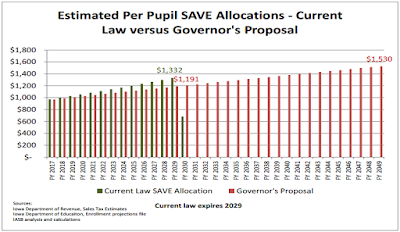On December 10th, 2015, President Obama signed the 'Every Student Succeeds Act' (ESSA) into law, leaving 'No Child Left Behind' (NCLB) in the rear view mirror. It is way too early too tell if this law will be the panacea it is heralded to be, but there is some positive news with this re-authorized legislation. For starters, we can celebrate that the locus of control has shifted away from the federal government and back to state and local authorities where it belongs.
There must be no doubt the premise behind NCLB was honorable. Designed in part to address a growing achievement gap in minority, poverty, and other subgroup populations of students; the legislation required that school districts disegregate these student achievement data and devise plans to close the gap. Prior to NCLB, differences in achievement among subgroups may not have been widely known or scrutinized because we didn't look at data that way. Consider a school where 90% of all students are meeting growth expectations year after year. At first blush, this seems like an impressive statistic. But what if we look at the 10% that didn't meet expectations and realize those 10% are in a minority subgroup or students of poverty? NCLB forced schools to shine a light on these groups and take action on what they saw. Where NCLB fell short was in the implementation of an accountability system that included a heavy reliance on standardized testing and unrealistic, unattainable goals for student achievement. Remember, NCLB set 2014 as the year in which all students in America would be proficient in math and reading. Schools who did not reach this benchmark would be faced with stiff sanctions that could include such things as loss in federal funding, termination of teaching staff, and firing of the building principal.
The new law still requires districts publicly report achievement data for various subgroups, but provides states and local school districts with the flexibility to develop goals and plans that make the most sense as opposed to a one size fits all system. As a practical matter, arbitrary and unrealistic goals for student learning outcomes are now a thing of the past. However, we will still continue to disegregate, report, and develop comprehensive plans designed to address the achievement gap. In Iowa, we have recently released the Iowa Report Card, (IRC) which you may recall reading about in my blog a few weeks ago. I would anticipate the Iowa Report Card will continue to be a component of our educational landscape for some time to come. The fact is, if you recall our prior conversation, this was implemented as part of the educational reform law passed by the Iowa General Assembly in 2013 known as House File 215. Since the new ESSA requires states to develop their own accountability systems, the IRC may satisfy this requirement.
Irregardless of how the IRC is changed, modified, or otherwise evolves in the coming years it will be important for all stakeholders to understand contextually what this and other so called report cards tell us. In its current iteration, 80% of the IRC ranking is derived from how our students perform on the Iowa Assessments. That is one test, given on one day. While we were thrilled with our results and enjoyed the accolades, that ranking does not tell the entire story of a school's success. I recall a colleague sharing recently the pride they had in their elementary school at earning a Blue Ribbon designation from the federal Department of Education. They were invited to Washington, D.C. for the ceremony and savored the attention. A mere two years later that same school, with the same staff found themselves on the federal SINA list!
So about that testing? I can't remember a time as a student that I didn't take the Iowa Tests of Basic Skills. Likewise, I can't remember a time in my career as an educator when I didn't proctor or administer the Iowa Assessments (which by the way are the same thing as the Iowa Tests of Basic Skills--but you already knew that didn't you?). The new ESSA doesn't change the testing scheme all that much. However, the test that we use to measure progress is a story that is yet to be told! After the state legislature fumbled the ball on this point, the state board of education accepted a recommendation to move away from the Iowa Assessments to the Smarter Balance. We are in the rule making process right now and it will remain to be seen if our legislature intervenes to either stop, postpone, or otherwise derail these efforts. I am not opposed to changing the assessment so long as everyone clearly understands that there will be an implementation dip (this test is much more rigorous than the Iowa Assessments) and that an appropriation will be necessary for the administration of the test (it will cost Hudson somewhere in the vicinity of $20,000 to administer).
Finally then, for those out there that think this new law means the end of the Common Core or any statewide set of highly rigorous standards I say--not so fast. Remember, the rise of the Common Core had nothing to do with the 2002 NCLB law. The Common Core was a state led initiative. Where we got sideways with the Common Core was when states were allowed to pursue a waiver from some sanctions in NCLB. Part of that waiver process required states to adopt the Common Core. The new legislation prohibits the federal government from requiring states to adopt any uniform set of standards, common or otherwise.
For the time being, we are letting the clock run out on NCLB. Next school year will be a transition away from this law and the new ESSA will go into effect during the 2017-2018 school year. Let's hope this law does what it intends to, truly helps every student succeed!
